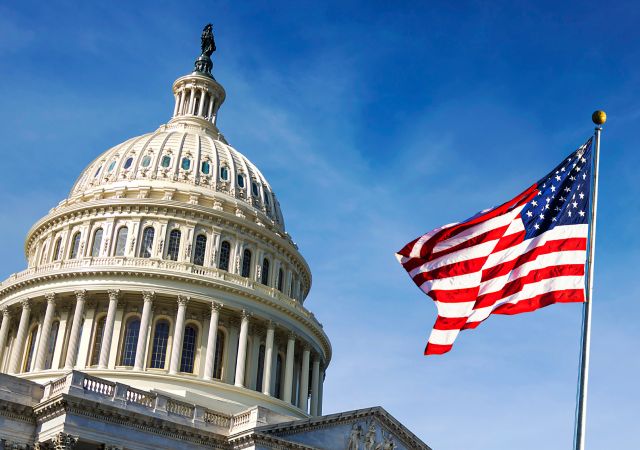For a long time, America has been considered the greatest country on earth, where the American dream meant an opportunity for individuals to put down roots, work hard, and take control of their livelihood. Today, that dream seems to be a little harder to see, with the cost of living skyrocketing, a recession on the horizon, and more and more families struggling to secure care for their loved ones.
The care industry has been in crisis even before the pandemic turned our world upside down. But both employers and politicians alike continue to wait for the other to step in and provide solutions for our inadequate childcare system. And while they play this high stakes game of chicken, working parents, and specifically working mothers, are quite literally paying the price.
The U.S needs to catch up
Progress towards a better future for our children is possible and already in motion in other parts of the world, yet America finds itself behind. In 2021, a report conducted by UNICEF evaluated wealthy countries around the globe and ranked them according to the strength and effectiveness of their child care policies in four critical criteria:
- Their family leave policies
- Access to child care
- The quality of that child care
- How affordable it is for working families to secure that child care for their children
The United States ranked 40th out of 41 established and wealthy countries for our national childcare policies, beating only Slovakia for last place due to our lack of paid parental leave, the rising cost of care, and the fact that 51% of people in the United States live in a child care desert.
What does an investment in childcare look like?
In order for an investment in childcare to truly make an impact, policies must be able to deliver care options that are of high quality, affordable, and accessible for families of all incomes, regions, and care needs. This could look like offering soon-to-be working parents paid parental leave, subsidizing child care benefits after the child is born, or providing public resources that equip parents with the support they need when raising their children. The most in-demand types of child care include:
- Flexible care options
- Backup child care
- New parent support
- Monetary subsidies for child care
- Tutoring
The cost of inaction
While the government continues to miss their opportunity to pass meaningful legislation and create new laws that secure a more stable care system for working families, more and more employers are beginning to step up and offer child care assistance in the form of benefits, but it’s not enough. In 2022, 56% of employers report that they offer some form of child care benefits. Both the government and employers are aware of the cost of their inaction when it comes to child care. A Boston Consulting Group brief forecasts that the U.S will lose $290 billion by 2030 if the country continues to fail to address our lack of affordable child care.
Where do employers currently stand?
In the 2023 Future of Benefits report, Care explored how views of care offerings were evolving in response to changing workplace dynamics, and many employers responded that they were holding off on expanding benefits until they knew what government policy would be. Currently, the federal government offers employers incentives to offer child care benefits through the Employer-Provided Child Care Credit. With this tax incentive, employers are able to take advantage of a tax credit of up to 25% of their qualified child care costs and 10% of qualified child care resources and referrals. When we asked employers about their participation in the current employer-provided child care credit, we discovered the following:
- 42% of employers say that the government should have the primary responsibility for funding care-related employee benefits.
- Of those who know about it but don’t use the tax credit, 89% say they would if the credit was broadened to include more types of childcare.
- Among those employers who don’t currently offer childcare benefits, 83% say they would be likely to do so if they could offset their costs with a tax credit.
- 68% of employers favor flexible childcare benefits, while only 16% prefer on-site childcare.
Recent government policy
In August 2022, The Creating Helpful Incentives to Produce Semiconductors (CHIPS) and Science Act was passed to provide $52.7 billion in federal funding to revitalize the U.S. semiconductor industry. Applicants requesting Direct Funding over $150 million must submit plans to provide access to child care for facility and construction workers, through on- or near-site child care, pre-arranged agreements with existing child care providers, child care subsidies, or other similar measures.
What does the future hold?
While President Biden’s original plan to invest a trillion dollars in free universal pre-school and affordable child-care options failed to pass in Congress last year, there is now new hope for government action. On April 18, 2023, President Biden made an executive order for a policy change (not a law) to expand care and lower costs. This would make child care and long-term care more accessible and affordable for families, including military families. The order includes more than 50 directives to Cabinet-level agencies to take steps toward fixing the nation’s child care and long-term care system, White House officials said in a call with reporters previewing the actions. His order will specifically affect the following:
- Co-payments: The Department of Health and Human Services will consider actions to reduce or eliminate families’ co-payments for childcare.
- Veterans Access: The Department of Veterans Affairs will seek to improve access to home-based care for at-home support.
- Subsidies Policy: The federal government will conduct a review of child care subsidy policy and consider setting standards for when and how federal agencies should provide child care subsidies to federal employees in the future. Directs agencies to identify which of their grant programs can support child care and long-term care for individuals working on federal projects, and consider requiring applicants seeking federal job-creating funds to expand access to care for their workers.
- Military Bases: The Department of Defense will take steps to improve the affordability of child care on military installations. This includes providing support for service members and their families.
- Pay Increases: The Department of Health and Human services will also implement policies to boost pay for child-care workers, who typically earn less than $18/hour across the country, in addition to teachers and staff in Head Start programs. HHS will also implement policies for more child care providers to benefit from federal Child Care and Development Block Grant funding.
- Home-Care Funding: The Department of Health and Human Services will also create new rules to make Medicaid payments for home-care services more transparent in an effort to ensure a greater share of Medicaid funding reaching home-based workers.
Both this executive order and the CHIPS Act are indeed a step in the right direction for our government, who is still realizing the full potential of its role when it comes to advocating for working caregivers across the country.
At the end of the day, care is a bipartisan issue. Caring for a loved one touches people from all walks of life, and no matter who pitches in, when care is prioritized either in legislation or as employer-sponsored benefits, everyone wins. This kind of change doesn’t just lift up women, but their entire family, and by extension, their communities, and the very society we all live in. And it is high time that politicians and employers both continue to make inroads towards a care solution that American workers and our economy desperately needs.






